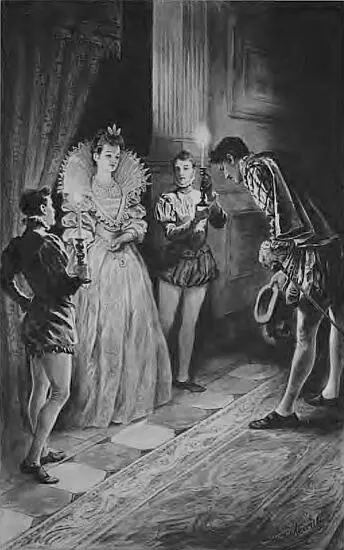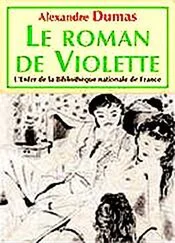Alexandre Dumas
THE VALOIS SAGA: Queen Margot, Chicot de Jester & The Forty-Five Guardsmen
(Historical Novels)
The Time of French Wars of Religion
Published by

Books
- Advanced Digital Solutions & High-Quality eBook Formatting -
musaicumbooks@okpublishing.info
2017 OK Publishing
ISBN 978-80-7583-592-5
MARGUERITE DE VALOIS: La Reine Margot MARGUERITE DE VALOIS: La Reine Margot Table of Contents
CHICOT THE JESTER: La Dame de Monsoreau
THE FORTY-FIVE GUARDSMEN
MARGUERITE DE VALOIS: La Reine Margot
Table of Contents Table of Contents MARGUERITE DE VALOIS: La Reine Margot MARGUERITE DE VALOIS: La Reine Margot Table of Contents CHICOT THE JESTER: La Dame de Monsoreau THE FORTY-FIVE GUARDSMEN
Table of Contents Table of Contents MARGUERITE DE VALOIS: La Reine Margot MARGUERITE DE VALOIS: La Reine Margot Table of Contents CHICOT THE JESTER: La Dame de Monsoreau THE FORTY-FIVE GUARDSMEN
Chapter 1. Monsieur De Guise’s Latin.
Chapter 2. The Queen of Navarre’s Bedchamber.
Chapter 3. The Poet-King.
Chapter 4. The Evening of the 24th of August, 1572.
Chapter 5. Of the Louvre in Particular, and of Virtue in General.
Chapter 6. The Debt Paid.
Chapter 7. The Night of the 24th of August, 1572.
Chapter 8. The Massacre.
Chapter 9. The Murderers.
Chapter 10. Death, Mass, or the Bastille.
Chapter 11. The Hawthorn of the Cemetery of the Innocents.
Chapter 12. Mutual Confidences.
Chapter 13. How There are Keys which Open Doors They are Not Meant for.
Chapter 14. The Second Marriage Night.
Chapter 15. What Woman Wills, God Wills.
Chapter 16. A Dead Enemy’s Body Always Smells Sweet.
Chapter 17. Maître Ambroise Paré’s Confrère.
Chapter 18. The Ghosts.
Chapter 19. The Abode of Maître Réné, Perfumer to the Queen Mother.
Chapter 20. The Black Hens.
Chapter 21. Madame De Sauve’s Apartment.
Chapter 22. “Sire, You Shall Be King.”
Chapter 23. A New Convert.
Chapter 24. The Rue Tizon and the Rue Cloche Percée.
Chapter 25. The Cherry-Colored Cloak.
Chapter 26. Margarita.
Chapter 27. The Hand of God.
Chapter 28. The Letter from Rome.
Chapter 29. The Departure.
Chapter 30. Maurevel.
Chapter 31. The Hunt.
Chapter 32. Fraternity.
Chapter 33. The Gratitude of King Charles ix.
Chapter 34. Man Proposes but God Disposes.
Chapter 35. A Night of Kings.
Chapter 36. The Anagram.
Chapter 37. The Return to the Louvre.
Chapter 38. The Girdle of the Queen Mother.
Chapter 39. Projects of Revenge.
Chapter 40. The Atrides.
Chapter 41. The Horoscope.
Chapter 42. Confidences.
Chapter 43. The Ambassadors.
Chapter 44. Orestes and Pylades.
Chapter 45. Orthon.
Chapter 46. The Inn of La Belle Étoile.
Chapter 47. De Mouy De Saint Phale.
Chapter 48. Two Heads for One Crown.
Chapter 49. The Treatise on Hunting.
Chapter 50. Hawking.
Chapter 51. The Pavilion of François i.
Chapter 52. The Examination.
Chapter 53. Actéon.
Chapter 54. The Forest of Vincennes.
Chapter 55. The Figure of Wax.
Chapter 56. The Invisible Bucklers.
Chapter 57. The Judges.
Chapter 58. The Torture of the Boot.
Chapter 59. The Chapel.
Chapter 60. The Place Saint Jean en Grève.
Chapter 61. The Headsman’s Tower.
Chapter 62. The Sweat of Blood.
Chapter 63. The Donjon of the Prison of Vincennes.
Chapter 64. The Regency.
Chapter 65. The King is Dead! Long Live the King!
Chapter 66. Epilogue.

Chapter 1.
Monsieur De Guise’s Latin.
Table of Contents
On Monday, the 18th of August, 1572, there was a splendid festival at the Louvre.
The ordinarily gloomy windows of the ancient royal residence were brilliantly lighted, and the squares and streets adjacent, usually so solitary after Saint Germain l’Auxerrois had struck the hour of nine, were crowded with people, although it was past midnight.
The vast, threatening, eager, turbulent throng resembled, in the darkness, a black and tumbling sea, each billow of which makes a roaring breaker; this sea, flowing through the Rue des Fossés Saint Germain and the Rue de l’Astruce and covering the quay, surged against the base of the walls of the Louvre, and, in its refluent tide, against the Hôtel de Bourbon, which faced it on the other side.
In spite of the royal festival, and perhaps even because of the royal festival, there was something threatening in the appearance of the people, for no doubt was felt that this imposing ceremony which called them there as spectators, was only the prelude to another in which they would participate a week later as invited guests and amuse themselves with all their hearts.
The court was celebrating the marriage of Madame Marguerite de Valois, daughter of Henry II. and sister of King Charles IX., with Henry de Bourbon, King of Navarre. In truth, that very morning, on a stage erected at the entrance to Notre–Dame, the Cardinal de Bourbon had united the young couple with the usual ceremonial observed at the marriages of the royal daughters of France.
This marriage had astonished every one, and occasioned much surmise to certain persons who saw clearer than others. They found it difficult to understand the union of two parties who hated each other so thoroughly as did, at this moment, the Protestant party and the Catholic party; and they wondered how the young Prince de Condé could forgive the Duc d’Anjou, the King’s brother, for the death of his father, assassinated at Jarnac by Montesquiou. They asked how the young Duc de Guise could pardon Admiral de Coligny for the death of his father, assassinated at Orléans by Poltrot de Méré.
Moreover, Jeanne de Navarre, the weak Antoine de Bourbon’s courageous wife, who had conducted her son Henry to the royal marriage awaiting him, had died scarcely two months before, and singular reports had been spread abroad as to her sudden death. It was everywhere whispered, and in some places said aloud, that she had discovered some terrible secret; and that Catharine de Médicis, fearing its disclosure, had poisoned her with perfumed gloves, which had been made by a man named Réné, a Florentine deeply skilled in such matters. This report was the more widely spread and believed when, after this great queen’s death, at her son’s request, two celebrated physicians, one of whom was the famous Ambroise Paré, were instructed to open and examine the body, but not the skull. As Jeanne de Navarre had been poisoned by a perfume, only the brain could show any trace of the crime (the one part excluded from dissection). We say crime, for no one doubted that a crime had been committed.
This was not all. King Charles in particular had, with a persistency almost approaching obstinacy, urged this marriage, which not only reëstablished peace in his kingdom, but also attracted to Paris the principal Huguenots of France. As the two betrothed belonged one to the Catholic religion and the other to the reformed religion, they had been obliged to obtain a dispensation from Gregory XIII., who then filled the papal chair. The dispensation was slow in coming, and the delay had caused the late Queen of Navarre great uneasiness. She one day expressed to Charles IX. her fears lest the dispensation should not arrive; to which the King replied:
Читать дальше














